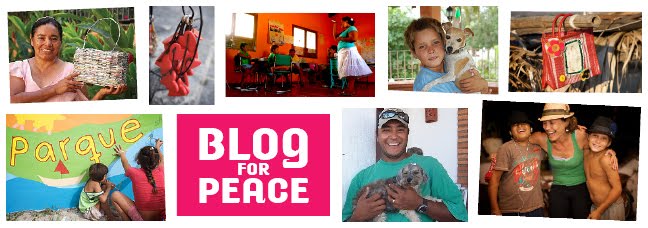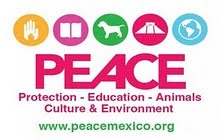Before coming to Mexico, PEACE founder Molly Fisher was a teacher at a high school in Colorado where about half of the students were Hispanic. In the hopes of becoming a better teacher, Molly visited Mexico in order to learn more about the country’s culture and language. However, she liked Mexico so much, she never left, and after teaching science at the American School of Puerto Vallarta, she founded PEACE in 2005.
When asked about what inspired PEACE, Molly answered, “Looking around, it just seemed like a lot of needs weren’t being met in different communities, and so I didn’t think that just an animal program or just an educational program would do the trick. PEACE is a way to really involve the entire community. If one part of the community is off-balance, then the entire community can be off-balance. It’s more holistic.”
PEACE is an incredibly ambitious organization. Its name is an acronym for Protection, Education, Animals, Culture, and Environment, and its mission is to “facilitate sustainable programs and nurture self-empowerment throughout Mexico by providing communities and individuals with tools to improve their quality of life.” PEACE does this through a number of programs.
The first program is Ayuda a los Animales, or “Help the Animals.” It is a mobile animal clinic that travels to a different town in the area each week and offers four-day veterinary clinics with free spaying and neutering. Help the Animals travels to about thirty towns per year.
Casa Comunidad is the educational program, and probably PEACE’s largest. It’s a daily after-school program from 3-5 PM. PEACE worked with local schools and teachers to develop the curriculum, which is project-based and features a different theme centered around ecology, health, or journalism each bimester.
Another program is Orgullo en la Comunidad, or “Community Pride.” This is the environmental aspect of PEACE. Its work includes recycling projects, compost projects, and beach and arroyo cleanups, all of which are done in conjunction with local leaders, businesses, schools, and students.
Fourth is Manos Unidas por la Mujer (“United Hands for Women”). This program teaches local women how to make and sell Mexican handicrafts and folk art using recycled and donated materials. Its effects are numerous – the women make some extra money, their confidence and self-esteem grow, and some even start their own businesses.
Since PEACE’s work is so extensive, there are countless opportunities to volunteer. Reading with kindergarten students, working at an animal clinic or recycling project, and building a park are just a few examples of what can be done. Some volunteers even work outside of Mexico, doing jobs such as translating documents, searching for grants, and holding PEACE parties in their homes to sell products made by the women of United Hands.
Of course, PEACE also appreciates donations. Money donations can be either unrestricted or earmarked for a specific program. As far as materials, the organization is always looking for food, clothing, computers, vehicles, fabric and cloth, newspapers, magazines, and beads. For more information about volunteering or donations, please visit PEACE’s website.
At the end of our interview, we asked Molly about her favorite memories from PEACE. This is what she said: “There are so many every day. Like seeing the woman [from United Hands] that literally was unable to work before this opportunity and [now she] buys the medicine for her kid. To see that whole change happening [is] amazing. With the animal program, you always get people that walk miles to bring their animals in. It’s inspirational when you see people that really do care. With the educational program, there’s the child that is nine years old and never went to school and he finally learns his vowels. On the donor side, being able to connect donors into the community, being able to take them around and show them how their donations are being spent and seeing their eyes sparkle and light up… they’re more part of the community and they can see the impact of their goodwill.”
Friday, November 20, 2009
Subscribe to:
Post Comments (Atom)


No comments:
Post a Comment